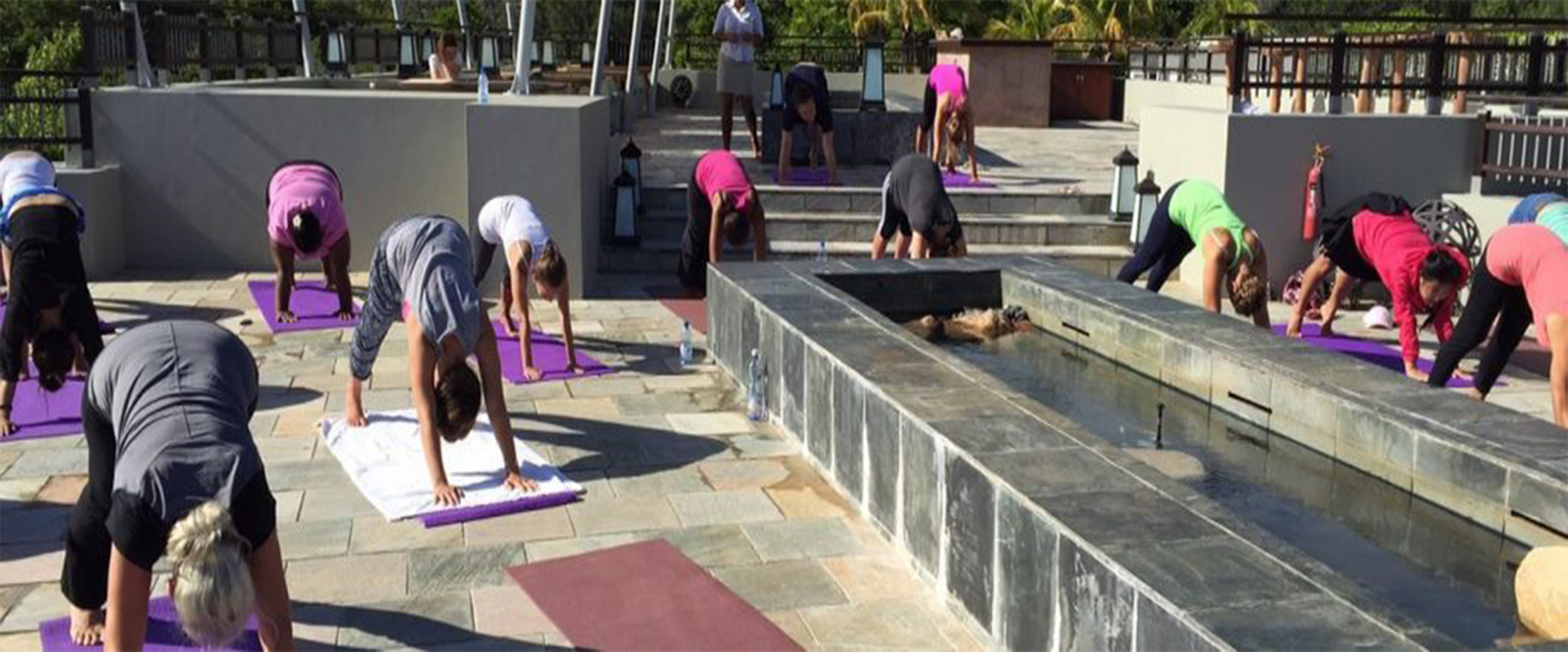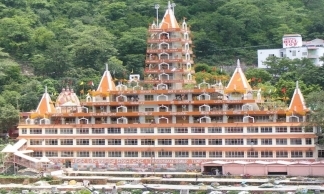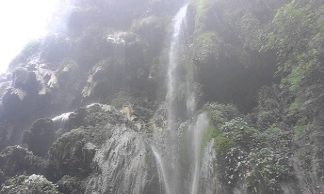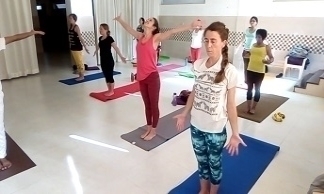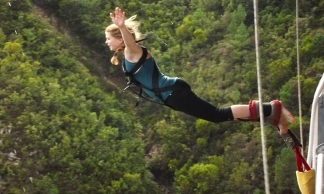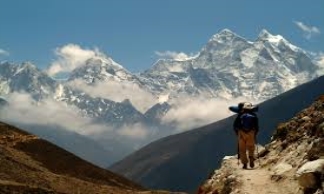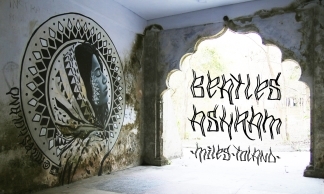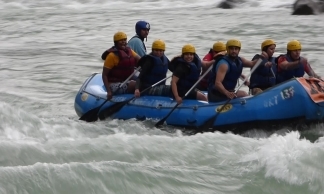200 Hours Yoga Teacher Training
This program is suitable for all the enthusiastic people specially for beginners who are looking to gain as well to share their Yogic knowledge with others. The theme is to enhance the abilities, to develop the confidence level & to boost individual’s Yogic skills by a proper and continuous practice.
200 HOURS YOGA TTC – CURRICULUM
Hatha Yog – Basic Series
- The definition and meaning of Hatha Yog. Brief introduction of traditional Hatha practice.
- Surya Namaskar(12 Asanas) with Mantra awareness to built up inner and external awareness.
- Chandra Namaskar(Moon Salutation) for energizing the body.
- Sukshma Vyayama(Warming up, Joints and Glands exercises).
- Standing series of Asanas.
- Kneeling series of Asanas.
- Sitting series of Asanas.
- Lying on Stomach or Prone series of Asanas.
- Supine series of Asanas.
- Inversion series of Postures.
- Importance of adjustment the sequence of Poses.
- Asanas benefits and their contra-indications.
Ashtanga Yog- Primary Series
- An introduction of traditional Ashtanga practice.
- Practice of Strength building, Endurance and balancing poses.
- Primary 3 levels.
- Drishtis in Ashtanga series
- Importance of Ujjai breathing and Bandhas in series.
Pranayama
- What is the meaning of Prana and Pranayama?
- Types of Pranayama practices.
- Practice of major Eight traditional Pranayamas.
- Thoracic breathing, Chest breathing & Diaphragmatic breathing.
- What is Nadi or the veins?
- Introduction of major Nadis in our body.
Yoga Philosophy -1
- Indian Darshan or philosophy?
- What is Yog? History of Yog.
- The four Yugas or time periods in Yogic Tradition.
- Six ancient Indian Philosphies. A brief explanation of Yog Darshan and Vedanta.
- The five Koshas or sheaths.
- Self-Realization & Liberation? Why?
- What is Consciousness?
- The four faculties of mind –field.
- The four foundational Pillars of life.
- Introduction of Ayurvedic life style. How to know different Prakaritis?
- Eight limbs of Yog of Patanjali.
- What is waking state in Yogic science?
- What is dreaming state in Yogic Science?
- What is Deep sleep state in Yogic Science?
- What is Meditation and Yoga Nidra?
Yogic Anatomy
- Introduction of Yogic Anatomy and Physiology?
- Introduction of human Skeletal and Muscular Systems and contraction in Muscular System.
- Introduction of Respiratory system and Yogic breathing.
- The Shat kriya practices and their benefits on body.
- Connection of Pranayama practices to digestive and Immune Systems.
- How asana practices gives various effect on Joints, Spinal cord and Muscular System.
- The structure of spine and its movement in Yog practices.
- Know the basic studies and types of joints to avoid injury during Asana classes.
- Study and discussion about spine according to yogic point of view.
Dhyana -1
- What is Dhyana or Meditation ? Different types of Meditation.
- What is difference in between Dharna and Dhyana?
- Chakra Meditation.
- Breath Awareness Meditation.
- Contemplative Walking Meditation.
- Mantra Awareness Meditation.
- Inner Light Meditation.
- Full Moon Meditation.
Yog Nidra-1
- An Introduction of Yog Nidra or Yogic Sleep. Benefits of Yogic sleep.
- Three states of consciousness.
- Yoga Nidra practices from Satyananda tradition
- How Yoga Nidra practice cures Insomnia & other mental problem?
Yogic Anatomy
- Introduction of Yogic Anatomy and Physiology?
- Introduction of human Skeletal and Muscular Systems and contraction in Muscular System.
- Introduction of Respiratory system and Yogic breathing.
- The Shat kriya practices and their benefits on body.
- Connection of Pranayama practices to digestive and Immune Systems.
- How asana practices gives various effect on Joints, Spinal cord and Muscular System.
- The structure of spine and its movement in Yog practices.
- Know the basic studies and types of joints to avoid injury during Asana classes.
- Study and discussion about spine according to yogic point of view.
Dhyana -1
- What is Dhyana or Meditation ? Different types of Meditation.
- What is difference in between Dharna and Dhyana?
- Chakra Meditation.
- Breath Awareness Meditation.
- Contemplative Walking Meditation.
- Mantra Awareness Meditation.
- Inner Light Meditation.
- Full Moon Meditation.
Yog Nidra-1
- An Introduction of Yog Nidra or Yogic Sleep. Benefits of Yogic sleep.
- Three states of consciousness.
- Yoga Nidra practices from Satyananda tradition
- How Yoga Nidra practice cures Insomnia & other mental problem?
Adjustment & Alignment Class-level1
- Six steps of doing Asana correctly. How to use of props for protection?
- Workshop on side bending and front & back bending.
- How to make mind flexible by making body flexible?
- Alternative style of Asana for various benefits.
- Various limitations and contra-indications of specific Yoga practices.
Shat Kriya –level 1
- Introduction of Shat Kriyas according to classical Hatha Yoga.
- Practicum of Jal Neti and Sutra Neti(Cleansing Mucus or blockages from nasal passages and sinuses).
- Practicum of Kunjal (Cleansing the excessive mucus from the digestive track).
- Practice of Danda Dhauti to cleanse the stomach and heart track.
Mantra Chanting -1
- Introduction of Mantra Yog. Importance of (OM)-AUM.
- Mantra for Meal Purification
- Mantra for Obstacles. Mantra for self Realization.
- Mantra for universal masters to bless.
- Chanting for self confirmation.
- Mantra for well being.
Mudras -1
- Importance of Mudras according to Hatha Yog Pradipika. Types of Mudras.
- Knowledge of Mudras for curing the Ailments.
- Physical, Mental and spiritual Benefits of Mudras.
- Practicum of Gyana & Chin Mudra. Practicum of Ashwini Mudra.
Teaching Methodology-1
- Discipline for Yog Teachers and Students.
- The scope of listening, presence, directive and non directive dialogue.
- How important is demonstration?
- What are the preparations for class room?
- How to describe the practice, techniques and delivery in teaching a class?
- What are the seven steps to become a great Yog teacher?
Bandhas-1
- Nine Main Doors in Human Body.
- What are Yogic locks?
- What are its preparations & benefits?
- Three Main Bandhas(Mool Bandha, Uddiyana Bandha & Jalandhar Bandha).
- Maha Bandha- Great Lock.
Yogic Cooking
- Yogic healthy Kichadi.
- Yogic herbal Tea
Group Discussion
- Group Discussion
- Root cause of all pain and suffering is ignorance, how?
Practicum -1
- How to manage a Yogic Session?
- The adjustment of body parts before Yogic practices.
- Proper warm up and well suitable instructions to the students.
- Long practice of teaching and attaining command over the class.
- Checking proper poses and techniques of students.
- A proper guideline for practice of Asanas, Pranayamas and Meditation to the students.
The Training phase:
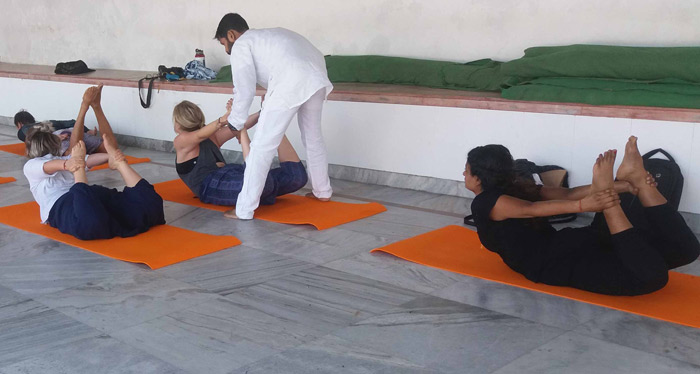
(Proper Alignment & correction of Pose)
We master our students in near about 200 traditional Asanas during the training. The classes evolve a descriptive explanation about Asanas, their benifits, the terminology as well a brief introduction about the contraindications of Asanas. After learning phase the students are divided into groups for enhancing their teaching skills. With this 200 Hours YTTC program our students are capable of Managing a Yog session with proper explanation about Asanas and other subjects. This program is meticulously designed to learn Hatha Yog, Primary series of Ashtanga Yoga, Kundalini Yoga, Yoga Therapies as well the Tantra Aspect by which the students are capable to focus on these concerns:
1.Awareness about Prana(breath).
2.Move through every posture.
3.Drishti(Point of Focus).
4.Correction of poses.
5.Uses of Bandhas(Lockings).
6.To feel and to observe the human body.
7.Sanskrit names of the postures with their pronunciation.
8.Deep meaning of the pose and it’s working.
.png)
